Track Control: Best Practices and Recommendations
A beautiful well-groomed plot with fruit-bearing trees and vegetables is the result of the long and painstaking work of each summer resident. But it is worth at least a little to lose vigilance, as caterpillars may appear, which will reduce all efforts to zero.
Content:
- The most common pest caterpillars
- Methods for getting rid of caterpillars using chemistry
- Folk methods
- Pest prevention
The most common pest caterpillars
Most of the caterpillars create nests in the trees where they overwinter. It is noteworthy that such clutches can fit from hundreds to several thousand eggs, which later turn into caterpillars. If you don't get rid of them before spring arrives, problems can arise.
Caterpillar types:
- Hawthorn. These caterpillars are very visible during the winter. They create their clutches on several leaves at once and connect them with the help of a cobweb. The main parts to which they attach are the base and petiole of the plant. Such parasites live mainly on trees, and in winter they are very clearly visible on bare trunks. One such nest can number up to 3 thousand caterpillars.
- Goldtail. If the main habitat of the hawthorn is leaves and cuttings, then the lace-tails have branches. Such a caterpillar weaves a web on internodes, small branches and leaves, creating shelter there for the winter. If such clusters are found, they must be immediately removed along with parts of the trees themselves.
- Unpaired silkworm. These caterpillars are a large group pests, and the most common among them is the gypsy moth. Usually, such pests live in the forest, and only get to the site when they begin to multiply en masse. It is at this time that they can be seen with the beginning of spring. First, clutches of about 500 eggs appear, which are covered with fine hairs. After that, caterpillars begin to hatch from them, leaving veins and petioles from the leaves. Gypsy moths are easy to spot because they have a shaggy surface that allows such pests to be easily carried from tree to tree by the wind.
- Leaf roll. This pest is one of the most dangerous and common among caterpillars. Such caterpillars, having a very tiny size, are able to eat literally everything - buds, leaves, flowers and even fruits. Their characteristic feature is that they roll the leaves into a cigar-like tube. Inside the leafworm weaves a cobweb and feeds. Such insects are able to reproduce rapidly, giving up to three generations of the same parasitic caterpillars in one season.
The above types of insect pests are far from all parasites that infect a summer cottage. In addition to them, gardeners and truck farmers can also meet winter moths, bumpworms, whiteflies and other parasites.
Methods for getting rid of caterpillars using chemistry
You can effectively deal with caterpillars using modern means that quickly defeat pests. They do an excellent job with caterpillar populations without causing any harm to plants or humans.
Preparations are available in the form of powder, tablets or ampoules.
Usually, just one tablet or ampoule is enough for 7-12 liters of water in order to process plot with landings of 50 sq. m. Summer residents should be aware that when choosing chemicals to combat caterpillars, it should be remembered that such funds are limited in terms of application, despite their effectiveness.
This means that the last spraying should be carried out no later than two weeks or a month before harvesting. Otherwise, vegetables and fruits sprayed with such formulations cannot be eaten. Therefore, it is very important to adhere to the terms described in the instructions for use. Another way of dealing with caterpillars using chemicals is to add feeding straight into the ground. They are able to scare off such pests and prevent them from multiplying in the future.
Traditional methods
The best folk recipes for dealing with caterpillars on the site:
- Fumigation. This method requires any container that can withstand high temperatures. It should be filled with hot charcoal and sprinkled with resin and sulfur, taken in two to one proportions. Next, with this container, you need to go near the trees and fumigate all the areas that can be reached. An important rule: there should be no wind outside during this procedure. After that, the caterpillars will begin to die and crumble to the ground.
- Infusion of chamomile... This recipe requires field chamomile, which must be collected and dried. After that, the leaves and flowers are crushed. Further, the raw material is poured with water at the rate of one liter of liquid per 100 g of the plant. The infusion should stand for a day in a dark place, after which it is filtered and diluted with water (proportions one to five). 40-50 g of liquid soap is added to the resulting mixture in order to make it easier to apply to the leaves.
- Caterpillar glue. This method is one of the most popular among summer residents. A sticky mess attracts caterpillars, which easily stick to it and cannot get out of such glue in any way. In order to prepare such a trap for pests you need to take resin (100 ml), stearin (55 g) and pork fat (60 g). To get a homogeneous consistency, all components are heated. After that, mix, cool slightly and apply to areas of trees that are affected by caterpillars.
- Sagebrush against caterpillars. An excellent tool in the fight against such pests is bitter wormwood. It works especially well against fruit-eating caterpillars. This plant can be used as a decoction or tincture. In the first case, you need to collect blooming wormwood. Next, it should be crushed and filled with such raw materials in a bucket exactly half. Pour water on top. It should be infused during the day. After the allotted time, it must be put on fire and boiled for half an hour. After that, the broth is diluted with water in proportions of one to two and the plantings and fruit trees are sprayed from the caterpillars. Wormwood infusion is prepared as follows. Grind this plant and fill the bucket exactly one third. Next, the raw material is poured to the very top. Insist for three days. After the allotted time has passed, the infusion is filtered and the future crop is sprayed with it.
- Infusion on onion peels from caterpillars on cabbage... For this recipe, you will need a glass liter jar, which must be filled to the top with husks from Luke... After that, it is poured with two liters of water at room temperature and left to infuse for 1.5-2 days. After this time, the resulting infusion is filtered and poured into any container. The contents are supplemented with water so that 4 liters of the product are obtained. To make the infusion better adhere to the leaves on the cabbage, you can add 25 g of laundry soap.
- Infusion based on burdock leaves. The plant is crushed, and a bucket is filled with it so that they occupy exactly half of it.Pour water to the top and insist for 2-3 days. Filter the infusion before spraying. So that the plants are protected for a long time and so that the infusion can better adhere to the foliage, as in previous cases, you can add laundry soap (35-45 grams per ten-liter bucket). In the same way, infusions are prepared from tomato leaves, potato tops, chamomile, aconite, yarrow, milkweed and dope... They have no less effect than a remedy made from burdock leaves.
- Anti-caterpillar tobacco. This method will help to get rid not only of caterpillars, but also of other types of pests in the garden and vegetable garden (ants, aphids, moths, weevils and suckers). Both infusion and decoction can be made on tobacco. To obtain a decoction, you need to take 150 g of makhorka or tobacco and pour 2.5 liters of water. After the product has stood for a day, it should be boiled for several hours. Next, filter the broth and dilute with 10 liters of water. Add 45-60 g of grated laundry soap (can be replaced with liquid soap). To prepare the infusion, you need to fill the tobacco or makhorka with water. Recommended proportions are 1:10. The mixture should be infused for a day. After that, it is filtered and diluted with water. It shouldn't be hot. Then add 35-50 g of liquid or grated laundry soap to a ten-liter bucket of water. Used for spraying.
- Track ditch. In order for the garden to be reliably protected from caterpillars, some summer residents resort to the following method. They dig a ditch with not too great depth and width. But this method can only help against caterpillars that crawl. They will not be able to overcome such an obstacle. Parasites will gather in such trenches, and they just need to be destroyed. The only inconvenience is that such a ditch will have to be checked daily.
- Tomato greens from caterpillars. Such a remedy is dangerous for garden and garden pests. To prepare it, you should collect the tops after tomatoes have already grown and do not bear fruit. After that, it is placed in the shade so that it can dry. After that, the raw materials are cut into small pieces and the bucket is filled with them almost to the very top. Pour in water and boil for an hour. All tops must be thoroughly boiled. After that, dilute the broth with water in proportions of 2 to 10. So that the solution is well applied to trees and leaves, add a little soap (35-45 g).
- Pruning branches. Such methods should not be neglected, because caterpillars, like other parasites in the garden, love to hide in dark dense crowns, where the most optimal conditions for them are. If you do the pruning of branches in a timely manner and correctly, then the number of such parasites can be significantly reduced.
Pest prevention
In order not to fight the caterpillars in the summer cottage using chemical or folk remedies, preventive measures must be taken. To do this, it is necessary to constantly check all plantings for the presence of clutches of such parasites.
This should be done throughout the season. In addition, every fall, you need to rake and remove all the leaves that have fallen and the debris left over from the plants. This method will help reduce the amount pests Location on.
Every season, before sowing seeds, all trees and shrubs in the garden should be checked for caterpillars.
Leaves need to be examined not only from the outside, but also from the inside. After the eggs laid by such parasites are found, the leaves will need to be trimmed or pinched off and thrown into the trash. With the right work on pest control in the summer cottage, you can get a good harvest, which will delight you with quality and volume.
More information can be found in the video.




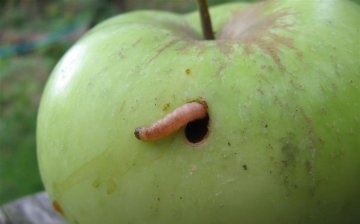
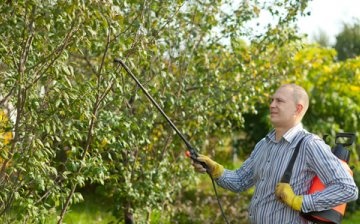

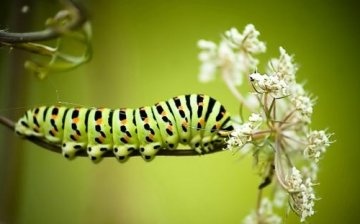








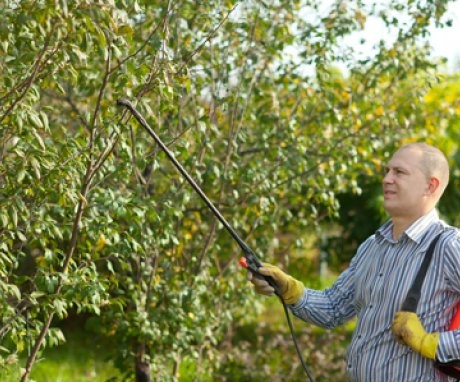


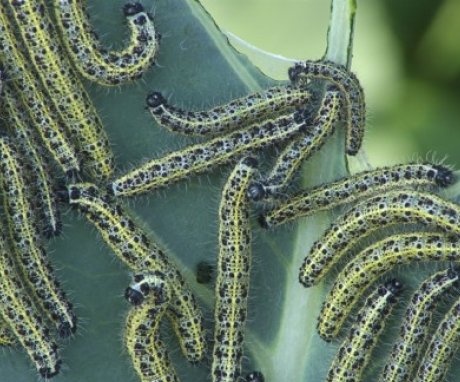
Nevertheless, despite the obvious harm of chemicals for the crop - with a large invasion of caterpillars, there is simply no other way out! No matter how you try, it is almost impossible mechanically to get rid of the caterpillar completely, so all that remains is to poison.